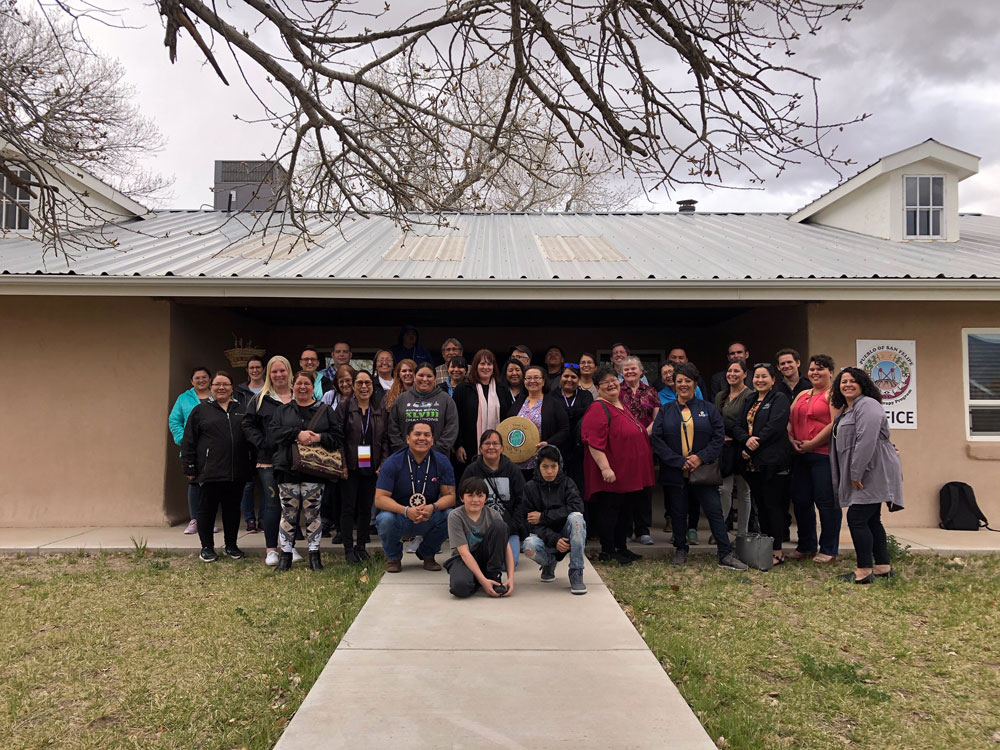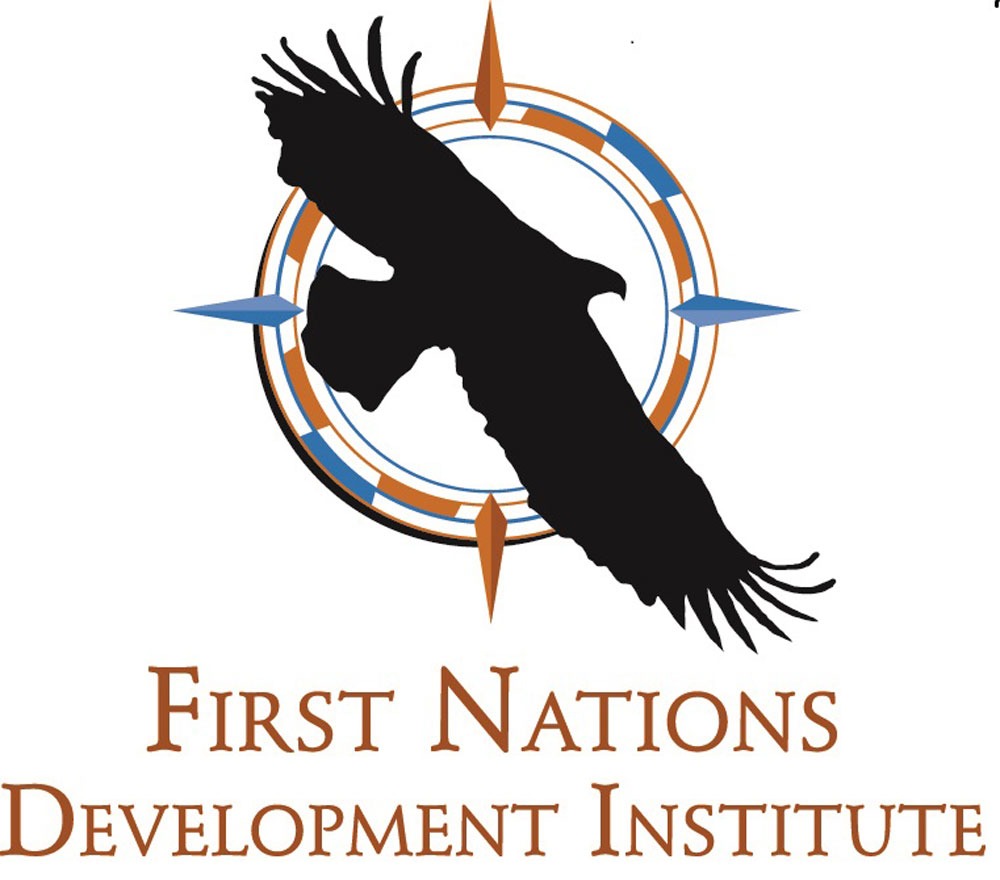
This article is the eighth in a series that NPQ, in partnership with the First Nations Development Institute, is publishing this fall. It features Native American activist writers who highlight the practices of community building in Indian Country and identify ways that philanthropy might more effectively support this work.

It has been said that reciprocity is a core value of the nonprofit sector. It is also a core Alaska Native value. By reframing the grantmaking relationship as a reciprocal relationship, foundations have the opportunity to intentionally reduce the power differential inherent in philanthropy while developing deeper and more effective partnerships with many of the nation’s 573 federally recognized American Indian and Alaska Native nations.
Reciprocity is an important Alaska Native value. As a young child, as an Alutiiq person, I was taught that reciprocity is about balance in relationships—between people, organizations, institutions, the environment. It isn’t necessarily a one-to-one exchange, but it is more generally about balance and harmony through attention to service and contribution. It’s about recognizing things, approaches, actions, and attitudes of value and maintaining the proper awareness and appreciation. It’s also about looking for what you can contribute as an individual person, family, community, organization, or institution that is of value. It’s about maintaining good relationships by attending to balance and giving back, contributing what you can, and being mindful of what and how much you take.
Early in my career as a social-work-trained policy analyst and advocate for Native families and communities at the National Congress of American Indians, I encountered formal organized philanthropy: private foundations and major donors. I had my first uncomfortable experiences with philanthropy trying to navigate power differences and differences in worldview at the same time—not too dissimilar from some of my experiences in higher education, actually.
From my social work strengths-based perspective and my Alutiiq values of stewardship, interdependence, and community (“we are responsible for each other and ourselves”), I approached what felt like awkward relationships by looking for an opportunity to reinterpret this situation. The lens that seemed the best fit to guide my action was to interpret this situation as calling for reciprocity. I chose to see that despite what seemed like vast differences between us in resources, authority, power, and all of the implications those things have for the ability to shape “reality” and “truth,” I had something valuable to offer philanthropy, that there was something of value I and my organization could contribute to individuals and foundations that could help us achieve balance in our relationships. That choice, early on, has shaped 20 years of relationships with philanthropy.
First, I educated myself about philanthropy and the history of its relationships with Native communities and organizations. I studied large foundations’ grantmaking to American Indian and Alaska Native (“Native”) causes. I was curious about the tensions and opportunities between organized philanthropy and Native communities and peoples, and in the contemporary sociopolitical environment, where the federal government will never fulfill its trust obligation to tribes, I thought of private philanthropy as a significant force with the potential to substantially influence the well-being of Native communities and peoples. At the Brown School of Social Work at Washington University, I wrote my dissertation about the determinants of and variation in large foundations’ grantmaking to Native America.
I’m well aware of the persistent, abysmally low grantmaking (by measures of both number of grants and dollars) to Native-controlled organizations and Native communities by most large foundations. I also learned that many of the grants described as benefitting Native communities or organizations are actually made to non-Native institutions, like mainstream universities and museums, many of which have questionable tangible, direct benefit to Native communities.
Sign up for our free newsletters
Subscribe to NPQ's newsletters to have our top stories delivered directly to your inbox.
By signing up, you agree to our privacy policy and terms of use, and to receive messages from NPQ and our partners.
Rather than being discouraged, I see the chance to help foundations view the prospect that they have before them, the incredible gift of the opportunity to partner with a population that can literally teach them about how to do the thing they care most about: how to better accomplish their mission.
There is a business case to philanthropy for intentionally increasing their grantmaking to Native causes and concerns, and specifically to Native communities, whether through tribal governments (which some foundations chose not to fund because they do not fund governments generally) or through Native-controlled nonprofits.
Here’s my proposition: most of philanthropy has a lot to learn about how to use their assets to better achieve their mission by investing in Native communities and by authentically developing learning relationships with all grantees. Let’s start with how foundations relate to all grantees. By reframing the grantmaking relationship as a reciprocal relationship, foundations have the opportunity to intentionally reduce the power differential inherent in philanthropy.
Grantmakers can choose to view the grant dollars that they invest in grant recipient organizations as part of a reciprocal relationship. The foundation is contributing funding for a recipient organization to steward, which moves the foundation not only closer to meeting their mission (such as: concrete reduction of health disparities, increase in family assets or access to higher education, or achieving environmental justice), but allows the foundation to learn from new perspectives and information bases about how better to meet their mission.
Given the history of federal American Indian policy, the willful destruction of Native tribes and communities, and intentional attempts to assimilate Native people, Native communities and organizations are often working on similar issues or challenges as other communities, but in some of the most challenging circumstances: jurisdictional mazes and complex service delivery; historical federal underinvestment; persistent, intergenerational poverty; remote, rural areas; and lack of community and family economic opportunity.
This is not to paint all 573 federally recognized tribes with one brush, and there certainly are outliers, but many Native communities are concerned about the same issues as mainstream America, and endowed with their values, worldview, and knowledge accumulated and passed down over many generations, address problems in ways that look different from mainstream America. The diversity of Native communities—on tribal lands and in urban areas—offers a natural experiment for learning about different approaches and the outcomes they yield to addressing significant societal challenges. Self-determined tribal communities are drawing on their strengths and capacity to address significant challenges in different ways, drawing on their value systems and worldviews, which lend themselves to unique approaches. Within these communities, you can find nonprofit organizations, tribal governments, and community groups tackling a huge range of issues, many of which align with foundation missions. By taking a more reciprocal view, philanthropy could learn much from Native communities, including:
- What results do specific philanthropic investments yield?
- Under what conditions are those results achieved?
- What level and types of capacity are required to produce the outcomes?
- What strategies are most effective?
- What are the tradeoffs or unintended consequences?
Answers to these questions may serve to propel philanthropy to profound learning about ways in which to achieve their mission and deepen impact and return on investment.
I choose to see philanthropy as an opportunity for balance. The reciprocity here can be viewed as an exchange of dollars to Native communities and organizations for concrete outcomes and learning about new strategies for achieving progress toward mission, a philanthropic imperative. This is an opportunity for foundations to discover approaches that enable them to most effectively deploy resources to impact what they care about and minimize unintended consequences. In this sense, foundations can make an intentional choice to reduce the power differential with grantees by seeing what grantees offer in progress toward achieving mission as equal to—or more important than—the value of the dollars that foundations contribute. Reciprocity offers the opportunity for mutually beneficial relationships that also serve the public good through learnings about addressing significant social, economic, and environmental problems.













